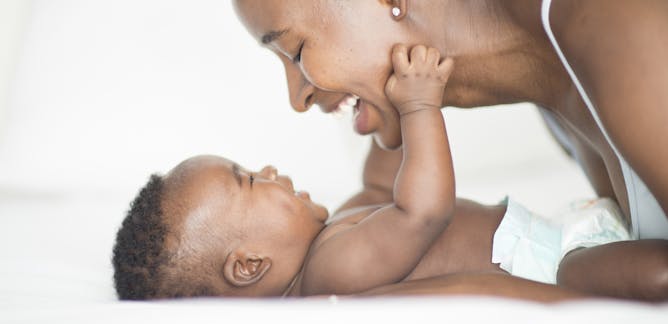
Articles on Play
Displaying 1 - 20 of 116 articles

Children who play a lot learn skills such as sitting, crawling and standing quicker. Play also leads to better health and wellbeing as they grow older.

Children benefit enormously from regular, cognitively stimulating interactions with their caregivers.

Kindergarteners’ literacy and active play are both grounded in the science of learning.

A new study shows how front yards can serve as windows into the inner lives of their residents – and their feelings about their home, neighborhood and city.

Skateparks show how the built environment can be transformed if communities, and the DIY cultures they give birth to, are allowed to flourish.

Neither hopefulness nor childhood development can occur in a vacuum. Strong relational bonds matter, too.

I took my young son Heathcliff to the show, and his perspective helped me see it through a kid’s eyes.

Some children have companions that are disobedient or even mean.

Education needs to be more aligned with healthy child development, children’s interests, and the importance of relationships for wellbeing.

Is it a STEM education or a STEAM education? Integrating arts into science programming and vice versa can pique kids’ curiosity − a play touring Michigan aims to do just that.

Children’s friendships are a vital part of their learning and development.

A journalism professor discovers that some of the best lessons for future journalists can be taught on a pool table.

Young children love to play with their mums and dads. But for busy parents, it’s often the last thing they feel like doing.

Play fighting can help children’s development in many ways, from their balance, to their nonverbal skills and cognition.

Laughter is so fundamental that animals like chimps, rats and dogs share the ability with humans. But in people it serves more serious social functions than just letting others know you’re having fun.

The seven-minute episodes show characters dealing with difficult emotions like fear and grief through play.

Miller told me that he was writing at the edge of a cliff. There was a reason the Bible began with the story of Cain and Abel, brother killing brother.

Two experts on children’s play explain why you should be skeptical of toys that are advertised as being educational, and what to look for instead.

A unique dataset from 32 children on 36 different play dates provided the opportunity to study how young children develop peer relationships, and how consistent they are with different children.

As drag storytime events are cancelled around Australia, children and young people, who are centred in the debate, have been rendered silent and invisible.





